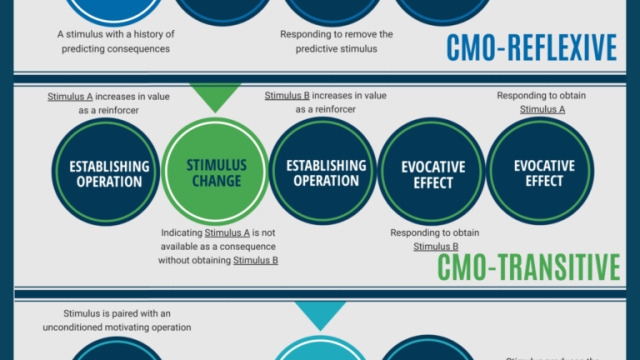Applied Behavior Analysis (ABA) has become an invaluable tool in unlocking the potential within individuals across various domains. Its influence stretches far beyond the realms of psychology, making significant strides in education, healthcare, and even business management. ABA therapy harnesses the power of behavioral principles, offering individuals with diverse needs a pathway towards positive behavioral change and enhanced overall performance. By dissecting behaviors, analyzing patterns, and implementing tailored strategies, ABA professionals are able to create lasting transformations that improve the quality of life for countless individuals.
At its core, Applied Behavior Analysis is a scientific approach that focuses on understanding how behaviors are influenced by their environment. By pinpointing the environmental factors that contribute to specific behaviors, ABA therapists develop comprehensive intervention strategies tailored to each individual’s unique needs. This approach offers a deep understanding of the complex interactions between behaviors, consequences, and the environment, leading to effective and sustainable change. Through the meticulous application of these evidence-based techniques, ABA therapists strive to unlock human potential in ways that were once thought to be unattainable.
What is ABA therapy?
Applied Behavior Analysis (ABA) therapy is a proven approach that focuses on improving social, communication, and behavioral skills. It is widely recognized as an effective intervention for individuals with autism spectrum disorder (ASD) and other developmental disabilities. ABA therapy utilizes systematic and data-driven techniques to understand and modify behavior patterns, with the ultimate goal of enhancing individuals’ quality of life and independence.
In ABA therapy, highly trained professionals work closely with individuals to identify target behaviors and develop personalized interventions. These interventions are based on the principles of learning theory, which involve positive reinforcement, prompting, shaping, and fading strategies. By breaking down complex skills into smaller, attainable steps, ABA therapy helps individuals acquire new skills and decrease challenging behaviors.
ABA therapy provides individuals with practical strategies to thrive in various settings, such as home, school, and community. It focuses on teaching individuals essential skills, including communication, social interaction, self-care, academic skills, and independence. Moreover, ABA therapy emphasizes generalization, aiming to ensure that skills learned in one context transfer and are maintained across different environments.
It is important to note that ABA therapy is highly individualized and tailored to meet the unique needs of each person. As a scientific discipline, ABA therapy relies on continuous data collection and analysis to evaluate progress, make informed decisions, and adjust interventions accordingly. By applying evidence-based practices, ABA therapy holds incredible potential for unlocking the capabilities and fostering positive outcomes for individuals with developmental challenges.
How does ABA therapy work?
ABA therapy, or Applied Behavior Analysis, is a highly effective method that helps individuals unlock their full potential by systematically modifying behaviors. This evidence-based approach is grounded in the principle that behavior is influenced by environmental factors, and through careful analysis, it aims to bring about positive changes in behavior.
One of the key aspects of ABA therapy is its emphasis on breaking down complex behaviors into smaller, more manageable components. By doing this, therapists are able to closely analyze the antecedents and consequences of each behavior, gaining a deeper understanding of the factors that maintain or influence it. This thorough analysis enables the development of tailored interventions to address specific behavior goals.
In ABA therapy, interventions are designed to reinforce desired behaviors while reducing undesirable ones. This is achieved through the implementation of various techniques such as positive reinforcement, prompting, and shaping behavior. By consistently providing positive consequences for desired behaviors and minimizing or eliminating reinforcement for undesired behaviors, individuals gradually acquire new skills and find alternative ways of responding to their environment.
ABA therapy for executive functioning skills
Through the structured and individualized nature of ABA therapy, individuals are empowered to improve their social interactions, communication skills, and daily life activities. It is important to note that ABA therapy is not limited to any particular age group and can be applied to individuals across the lifespan, including children, adolescents, and adults.
In summary, ABA therapy operates on the principle that behavior is learned and can be modified through systematic analysis and intervention. By breaking down behaviors, implementing targeted interventions, and reinforcing positive behavior, ABA therapy supports individuals in unlocking their full potential and leading more fulfilling lives.
The Benefits of ABA Therapy
Applied Behavior Analysis (ABA) therapy offers a wide range of benefits for individuals of all ages. This evidence-based approach focuses on understanding and modifying behavior to enhance the quality of life for those with autism spectrum disorder (ASD) and other developmental disabilities.
Enhancing Communication Skills: ABA therapy can greatly improve communication abilities. By breaking down language into smaller, manageable steps, individuals can develop effective communication skills, including verbal and non-verbal forms of expression. ABA therapy helps individuals to build essential skills such as expressive language, receptive language, and social communication.

Developing Independent Living Skills: ABA therapy provides individuals with the tools and strategies necessary to develop independent living skills. This approach emphasizes teaching everyday tasks such as self-care routines, hygiene habits, meal preparation, and household chores. By breaking down complex tasks into smaller, achievable steps, ABA therapy supports individuals in gaining a sense of autonomy and self-reliance.
Promoting Social Interaction: ABA therapy focuses on fostering meaningful social interactions and relationships. Through carefully designed interventions, individuals learn important social skills such as turn-taking, initiating conversations, and understanding non-verbal cues. ABA therapy also helps individuals develop empathy, recognize emotions, and establish and maintain friendships, creating opportunities for social inclusion and meaningful connections.
In conclusion, ABA therapy offers a wide range of benefits, ranging from improved communication skills to independent living and enhanced social interactions. By employing evidence-based methods and individualized treatment plans, ABA therapy unlocks the potential for individuals with autism spectrum disorder and other developmental disabilities to thrive and achieve their goals in various aspects of life.



